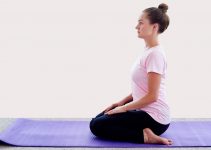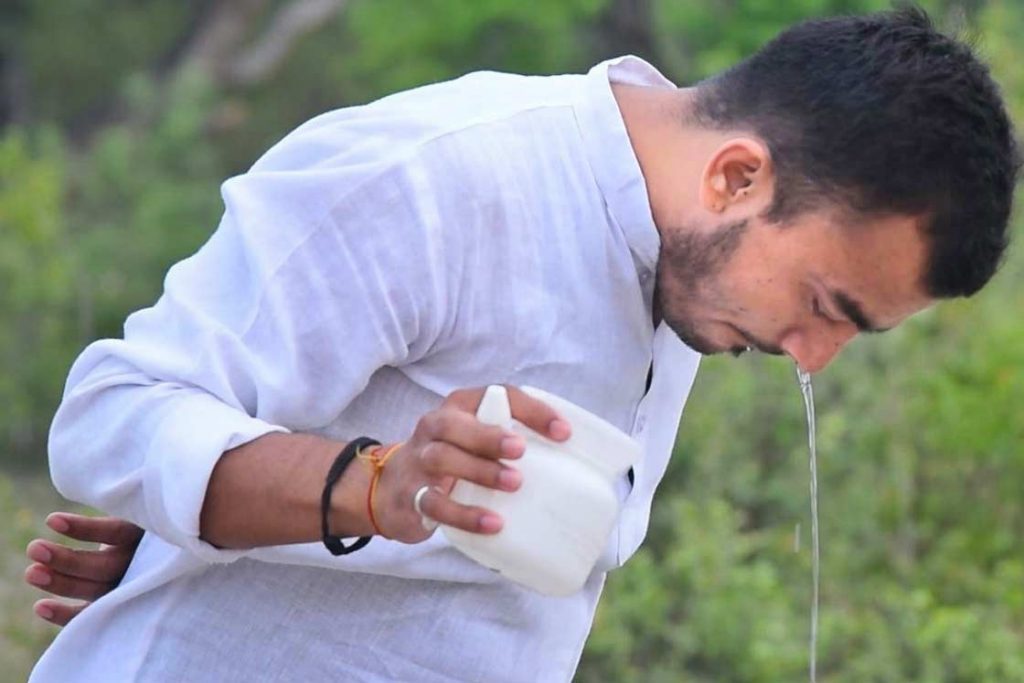
Allergic Rhinitis, also known as Hay Fever, is a condition of the inflammation of the nose caused by allergens like dust and pollen. It is one of the most common allergies around the world, with more than 10 million cases per year in India only. As a matter of fact, about 20-30% of people suffer from allergic rhinitis. And although on the surface it might not look any different from a common cold, it may lead to serious repercussions if not cured.
Yoga is considered an effective treatment of Allergic Rhinitis by combining various physical postures with breathing exercises. Owing to its relaxation benefits, it is considered a powerful discipline to reduce the frequency of Rhinitis symptoms. Relaxation by yoga retreats the activated fight and flight hormones in the body. This alleviates stress and thus allergies as well.
Causes And Symptoms Of Allergic Rhinitis
Allergic Rhinitis is caused by Allergene, anything neutral in the environment that incites an excessive immune reaction. These particles trigger the release of chemicals like histamine in the body [efn_note] Allergic rhinitis: not purely a histamine-related disease https://pubmed.ncbi.nlm.nih.gov/11291780/ [/efn_note] that stir up allergic symptoms. Some of the most common of these allergens are dust particles and pollen.
Allergens are inhaled through the nose. Inside the nose of an allergic rhinitis person, the mast cells (surrounded by IgE antibodies) in contact with these allergens release histamine. This causes the swelling up of the mucosa leading to excessive mucus production.
The mucus production is only initiated in an allergic person as the immune system of an allergic person is overly sensitive to allergens.
The excess mucus causes a runny nose, watery eyes (through the Nasolacrimal Duct) and stuffed ear sensation (due to the blocking of the eustachian tube). And eventually, the nerves of the nasal cavity are irritated causing one to sneeze repeatedly. In extreme cases, this can lead to difficulty in breathing, uncontrollable coughing, etc.
The most common airborne allergens include dust particles, pollen, dead animal skin or urine.
How Does Yoga Help Relieve Allergic Rhinitis?
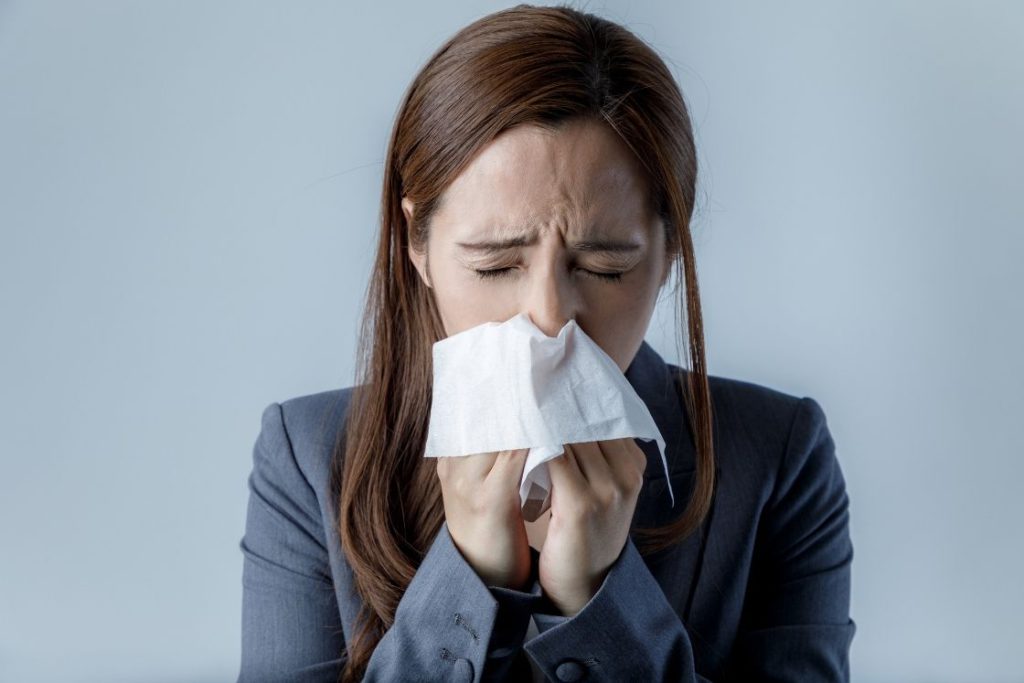
Over the years Yoga has provided a completely safe and natural solution to numerous medical conditions. Some particular Yoga poses work on improved breathing and immunizes the body against allergies. Many former patients of Allergic Rhinitis testify that Yoga significantly helped improve their condition.
The National Center for Biotechnology Information in 2019 published research [efn_note] Effect of Hatha yoga training on rhinitis symptoms https://pubmed.ncbi.nlm.nih.gov/31421665/ [/efn_note] in which it has shown Hatha Yoga training which consists of postures, breathing exercise, and meditation practice, improves clinical allergic rhinitis and cytokine profiles. It also concluded that regular practice of Hatha yoga showed improved respiratory flow through the nasal cavity.
In the conducted study, 8 weeks of aerobic exercise training showed reduced allergic rhinitis symptoms. The process lessened the nasal resistance by bringing down the blood flow which eventually resulted in decreased nasal cognition.
In addition, as breathing is majorly a lung mechanism, Pranayama yoga relaxes the muscles of the larynx and the bronchial branches by expanding the lungs. This helps in the expansion of air channels thus reducing the air resistance caused during breathing in the air ducts and nasal cavity.
With the help of yoga, the sympathetic nervous system reduces the number of venous sinusoids by activating nasal vasoconstriction. This gives way to maximize airflow volume in the nasal cavity to increase.
Severe allergic rhinitis has shown a considerable negative impact on the quality of life, sleep and work performance of an allergic person. In a Case Study on Patients with Allergic Rhinitis (2020) [efn_note] Case Study On Patient With Allergic Rhinitis https://www.researchgate.net/publication/342096131 [/efn_note], it has shown regular yogic practice helped patients of allergic rhinitis in gaining mental as well as physical health.
In this case study, an allergic person is required to practice yoga including loosening exercises, Asanas, Pranayamas, Meditation and Kriyas. According to the report, the patient experiences satisfaction within one and a half months of the practice of the discipline.
Yoga works on allergic rhinitis in natural ways. The discipline improves the ease of breathing, controls internal mechanisms and functioning and relaxes the mind.
Summary
Allergic patients who went under hatha yoga training had clear nostrils as yoga expands the air channels and reduces the air resistance in the air ducts and nasal cavity.
Another study shows regular yogic practices with proper medical counselling and guidance helps allergic rhinitis patient regain physical and mental health.
5 Yoga Poses To Relieve Allergic Rhinitis
1. Tree Pose (Vrikshahsana)
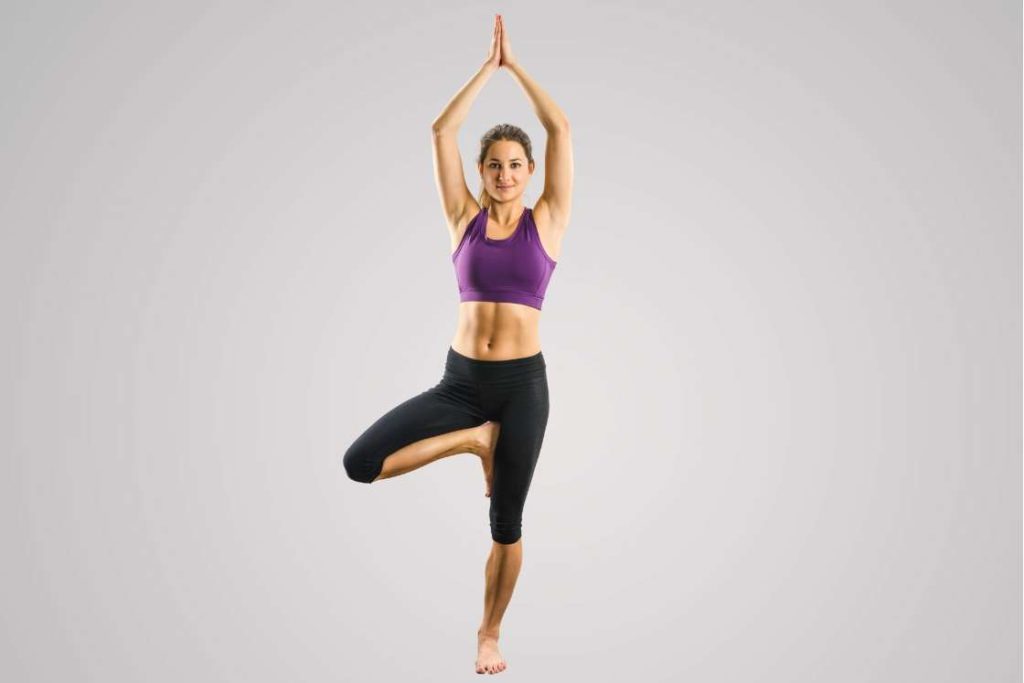
The tree pose is a standing pose in Yoga that requires one to maintain balance.
Besides its many physical benefits, the pose helps calm the body and mind which deviates one from stress and anxious thoughts and feelings. Less stress keeps in check the mucus production in the body.
2. Shoulderstand Pose (Sarvangasana)
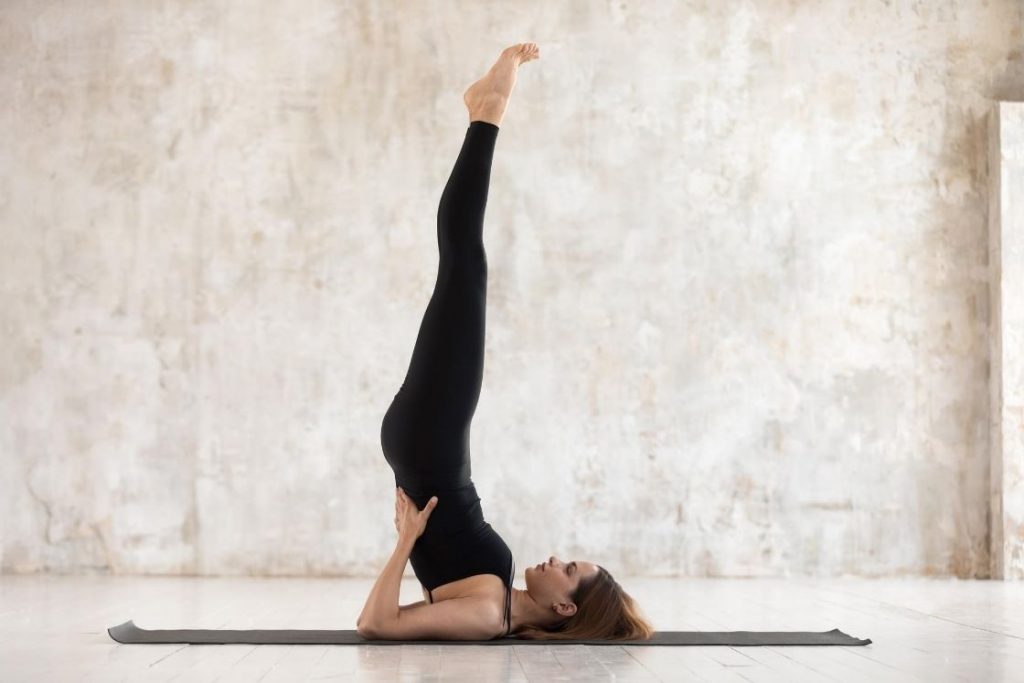
Shoulderstand is an inverted yoga pose that focuses on the back and neck and stretches the spine.
Shoulder stand pose helps the sinus drainage by improving the nasal passage. It also relieves congestion. However, it is to be noted that the pose is better suited for experienced yogis.
3. Fish Pose (Matsyasana)
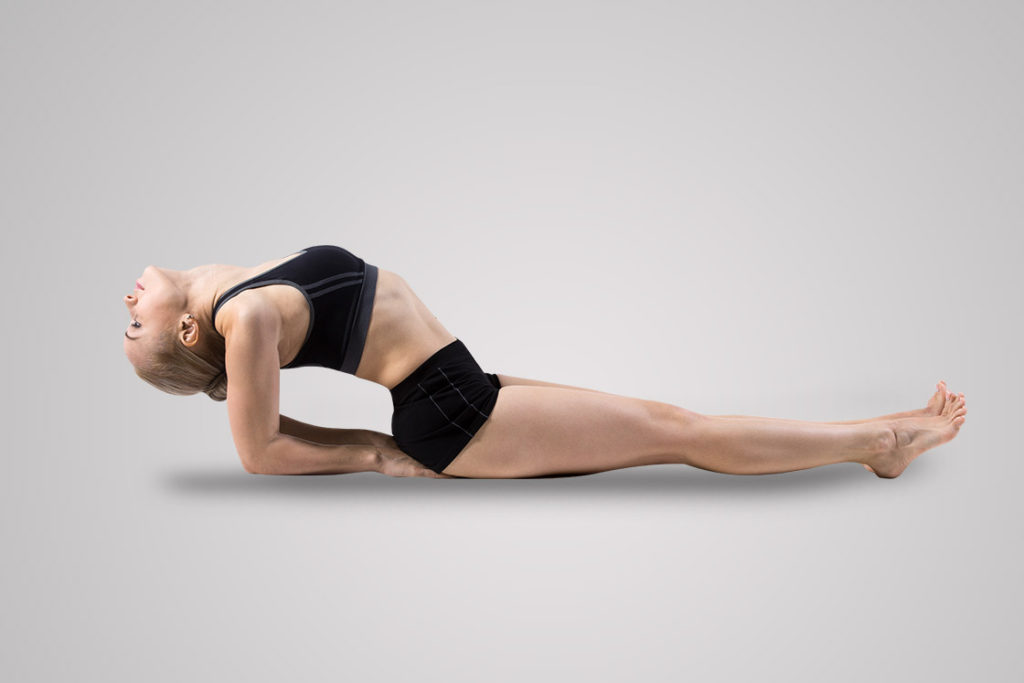
The fish pose is a back-bending yoga posture performed by laying on the floor. The posture is a wholesome pose in itself.
Fish pose opens up the throat and the lungs and helps one to be able to take larger volumes of air while breathing. Not only does it open up the chest, throat and abdomen but it also helps in relieving tension. It is more effective when performed after shoulder stand, it acts as a counterpose and relieves the pressure on the neck and spine.
4. Wind Relieving Pose (Pavanamuktasana)
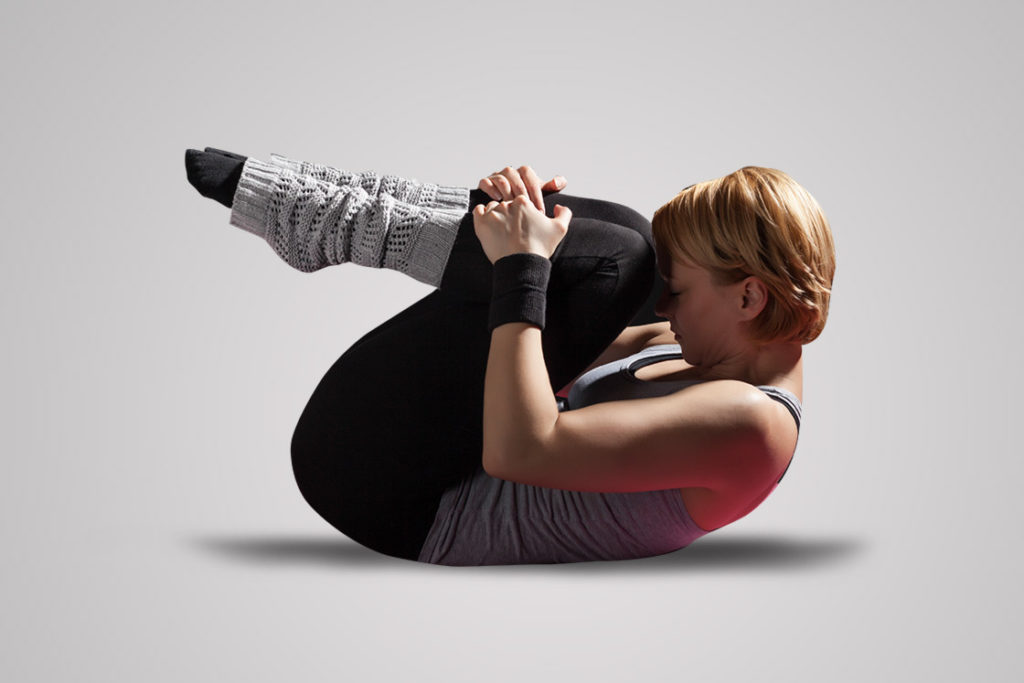
The wind relieving pose is a curled up gas relieving pose. It has proven great for beginners.
Wind relieving pose massages the internal organs and relaxes the body. It improves blood circulation in the body and relaxes the strained nerves. A relaxed body prevents the initiation of fight and flight hormones.
5. Warrior Pose I (Virabhadrasana I)
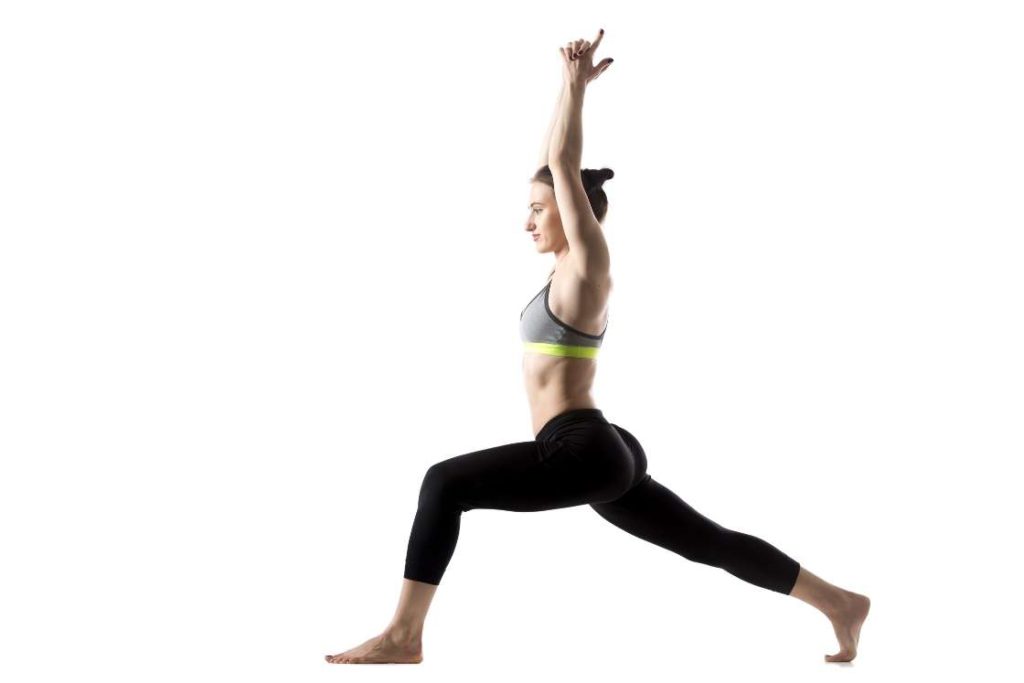
The warrior pose is of three types. This one is Warrior pose l. It is a standing pose performed for 20-30 seconds on each leg.
On the upper body, the pose focuses on the chest, lungs, neck, belly and shoulders and allows the body to take in more volumes of oxygen. This improves respiration and relieves congestion and stuffiness.
Jala Neti for Allergic Rhinitis

Jalaneti is one of shat kriya that can be helpful in relieving symptoms of Allergic Rhinitis. It enables you to clean your nostrils from congestion and mucus. The primary aim of this kriya is to clean the path of breathing and as you use water in this process, therefore, it is termed as Jalaneti.
Children are readily attacked by allergic rhinitis that reduces their activeness in school, creativity and productivity. The risk factor is that it can lead to asthma if not treated. For them, Nasal irrigation with saline water or Jalaneti can be an effective treatment that reduces the necessity of drug treatment. However, the process is equally effective for elders as well.
The process of Jalaneti is a bit difficult. For beginners, it’s recommended to perform under the guidance of an expert yoga teacher. If you want to do it yourself, make sure you sterilize the water properly by boiling and then cooling it completely. Then you have to mix the water with pure salt. After that, you can follow the steps.
- Stand straight and tilt your head at one side.
- Use a neti pot and slowly pour the solution in the upper nostril.
- Now let the saline solution pour from the other nostril. Keep calm and make sure you do not breathe from your nose during this process. Use your mouth to breathing.
- The water may go down to your throat sometimes but that will not make the procedure successful. You have to get the water out from the other nostril only.
- Now repeat the process with the other nostril after the water is drained out completely.
Jalaneti helps to clear the nasal cavities and increases the capacity of your body to fight nasal infections. The process makes the practitioner breathe more freely and reduces their chances of getting coughs, sore throats, tonsillitis and runny nose.
Conclusion
The general remedy of allergic rhinitis is oral antihistamines, leukotriene receptor antagonists, INS, and allergen immunotherapy. But these are the instant relief giving methods that will never succeed to eradicate the condition properly. Also, constant consumption of the prescribed medicines can lead to serious implications.
Yoga is an effective and affordable treatment of allergic rhinitis. Surveys on the patients of this condition prove that the effectiveness of yoga is way more than any other treatment. Regular practices of asanas, pranayama and meditation have shown an impressive improvement in the forced ventilation capacity of the recipients.

